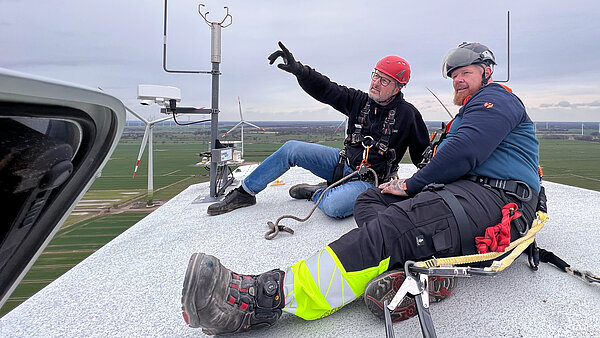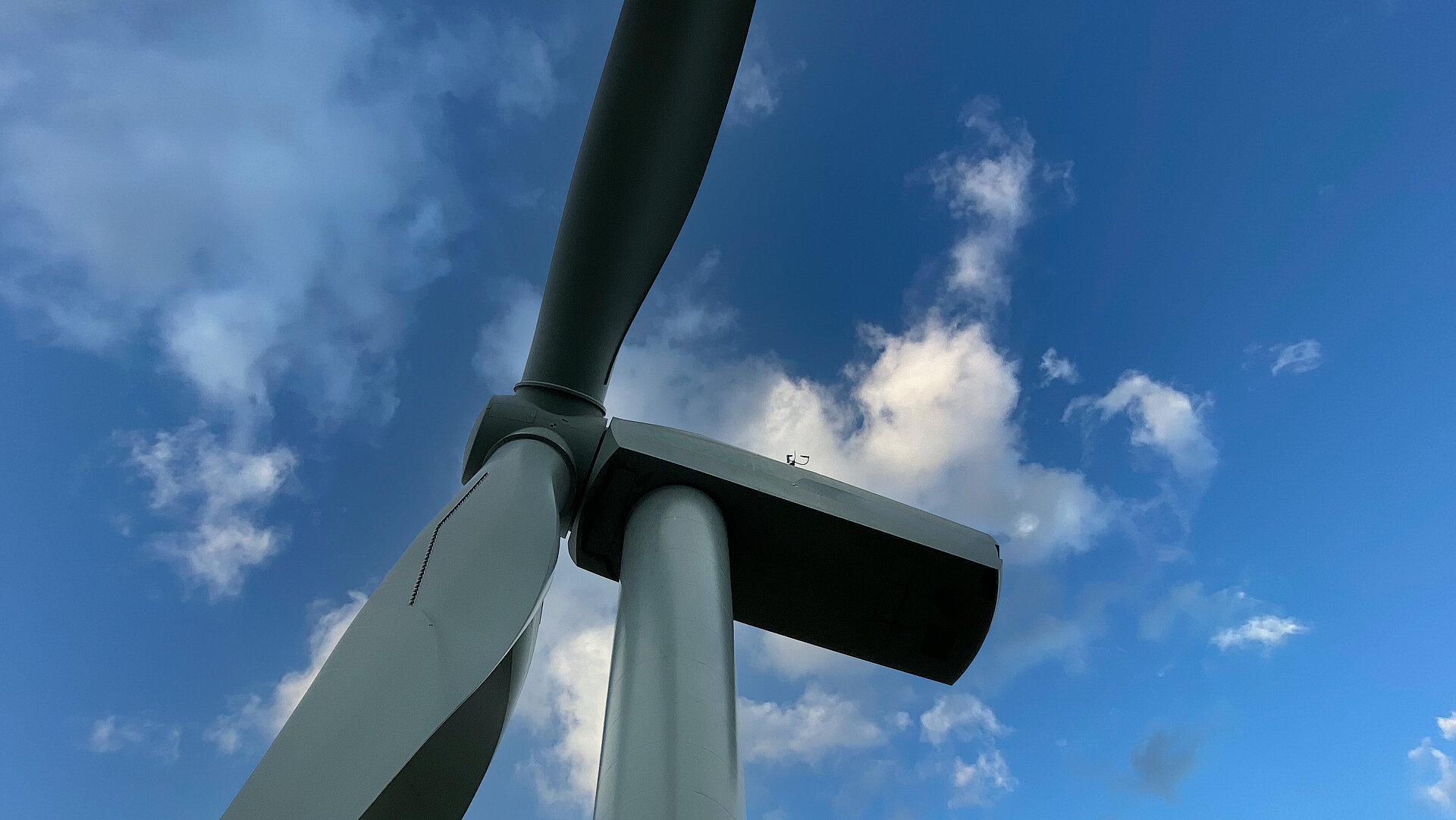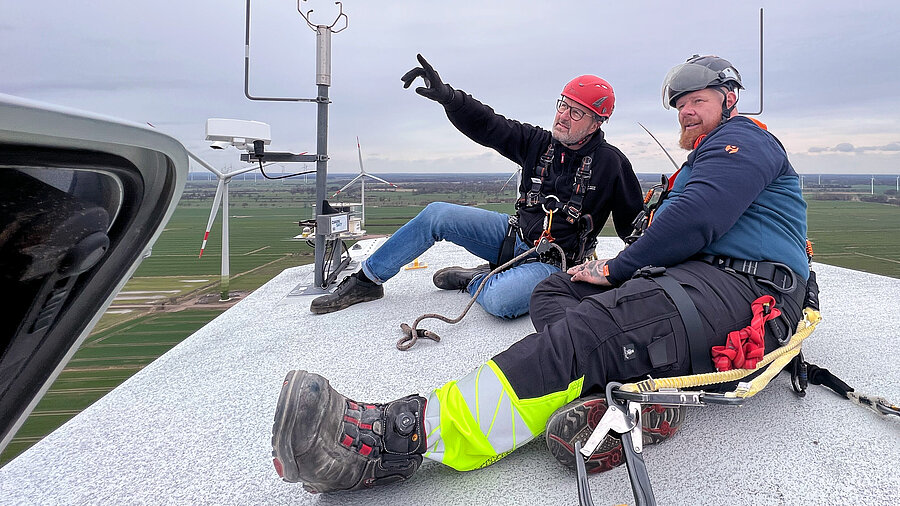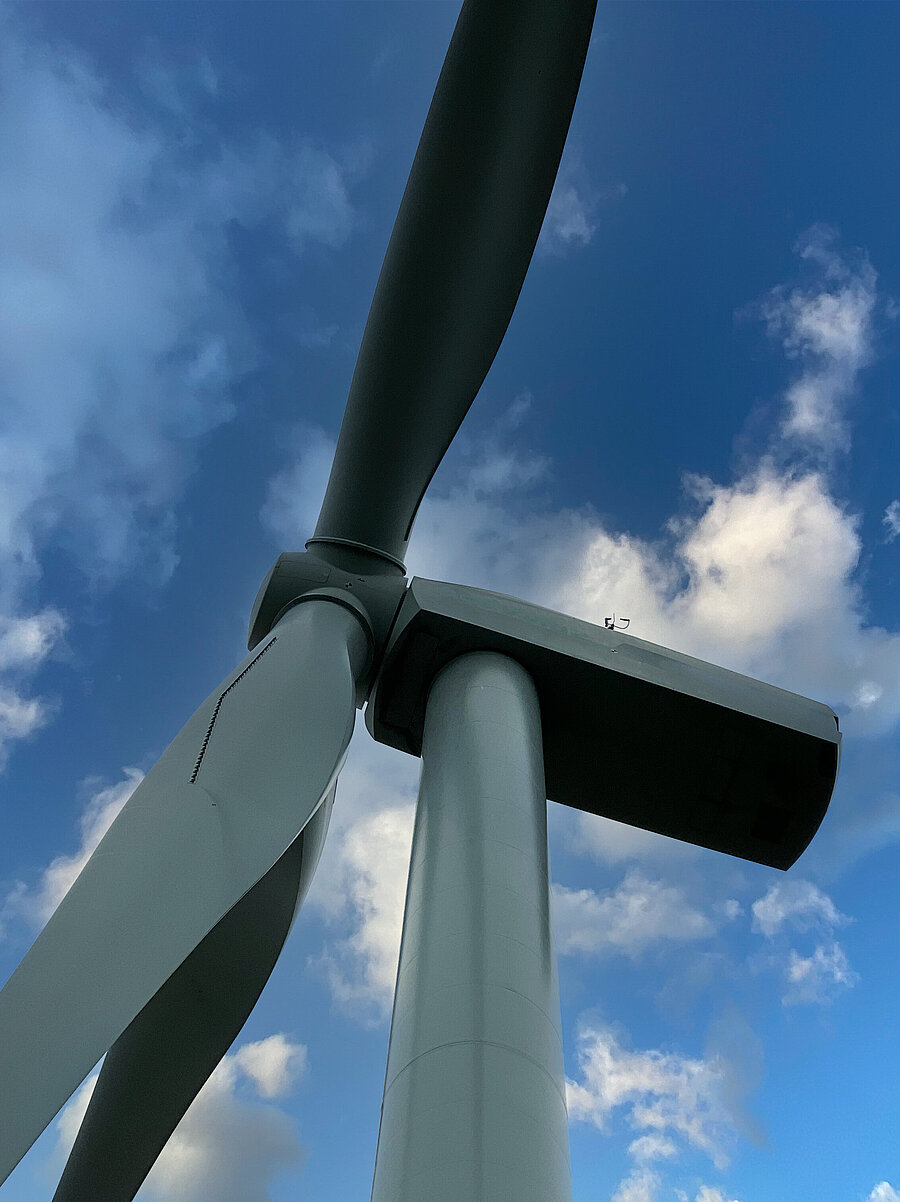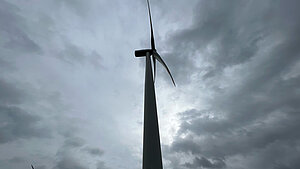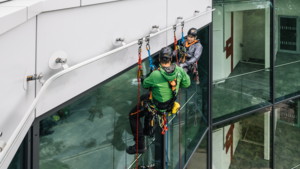Renewable energy sources are a basic piece of the jigsaw on the way to a sustainable lifestyle. And wind power plays a central role when it comes to generating the energy required in a clean, climate-friendly way. BWTS is a specialist in services relating to the generation of renewable energies, and since its foundation it has pursued the goal of making green energy successful in the long term. Just recently we looked over the shoulder of a BWTS service engineer during the maintenance tasks on a Senvion 3.4 wind turbine.
And these tasks are really something, because a power generator like this is about 100 metres in height, and is generally in an exposed location. This means that the safety of all engineers who venture into such dangerous areas has top priority. At INNOTECH we therefore examine in detail the special challenges created in practice by the various wind turbine models, and how we can optimise our fall protection systems for this specialised application. We can reveal this much: It was a very exciting day. But read it for yourself.
The start into the day
INNOTECH: How does your day start? What activity is planned today?
BWTS: Today the 6th annual maintenance of this wind turbine is on the agenda. The turbine has been generating power for 6 years, with a rated output of 3,400.0 kW. The actual work today includes various repairs, plus the main service, and any other jobs which arise – that’s what the service engineers from BWTS were contracted for.
INNOTECH: How do you actually proceed, and what do you have to look out for?
BWTS: The first thing is to register. That’s very important, because the wind turbine operators must know that these tasks are going to be undertaken, as the turbine has to be switched off to allow this. It’s the only way to work safely. In addition, the operators then know that the respective wind turbine will provide no power during the maintenance period. On top of that, they have to be able to react quickly in an emergency and therefore they need to know the exact location of the service engineers at that moment. This procedure is extremely important, above all in terms of safety. Problems of any type can occur at any time. So this principle applies: Register and inform before starting the work.
INNOTECH: That makes sense; so what happens after registering?
BWTS: After registering, we log in, and the wind turbine is brought to a stop. Only when the rotor blades are stationary are we allowed to access the turbine and start our vertical ascent. Either, as here, by using the service lift, or else directly by means of a ladder with appropriate fall protection.
Challenges during the ascent
INNOTECH: Okay, this turbine has a service lift, but what are the challenges when climbing vertically using a ladder? What are the actual dangers, and what are the particularly critical points?
BWTS: It’s obvious: The greatest danger comes from the enormous height of such a wind turbine – in this case it’s 96 metres for the maintenance staff to overcome. The risk of a fall is present at all times. That’s why, depending on the type of wind turbine, there are always a number of platforms used by the maintenance staff for taking a rest. Such an ascent is extremely exhausting. This wind turbine has 4 platforms. As a rule, a medium-sized wind turbine has 4 or 5 of them, installed at intervals of about 25 metres.
INNOTECH: What sort of safety precautions are there for the ascent?
BWTS: To reach the respective platform, the service engineer, wearing his personal protective equipment (PPE), must detach from the safety solution on the ladder, such as a rail system, and attach onto the single anchor points (EAPs). The other option is to attach yourself directly from the service lift onto the EAPs on the platforms. This is the only way to master a transit with the least possible risk. Although there isn’t a big gap between the service lift and platform, even there the service engineers must always be protected by means of PPE and EAPs. Because, here too, unexpected incidents can always arise – for instance when the technology doesn’t work perfectly. Ideally, the EAPs should be easy to reach from the service lift!
INNOTECH: Does the service lift go all the way to the top?
BWTS: No. The service engineers still face a vertical ascent in order to access the wind turbine’s nacelle. Of course the wind turbines differ in this regard, depending on type and structure. For example, there are also wind turbines which don’t have a nacelle any more. Regardless of that though, when transferring from the ladder towards the nacelle, the positioning of easily accessible EAPs is of utmost importance, because this represents a moment of increased potential risk for us service engineers.
INNOTECH: And what happens after the ascent?
BWTS: After the vertical ascent, which takes place by means of a rail system and matching sliders, we detach and re-attach onto single anchor points at the top end of the ladder. After climbing in through the hatch which leads into the nacelle, we close it, and so there is no longer a fall risk at this point.
INNOTECH: Okay, and what happens then in the nacelle?
BWTS: The rotor is then braked, brought to a stop, and locked in place using bolts, in order to create as stable a situation as possible while the work is carried out. A fixed rotor is also important for being able to lower the crane which is used for the transport of materials. Also during this work step the service engineer is permanently secured via EAPs. Then all planned and necessary repair tasks and the annual maintenance are performed in the nacelle.
Potential for improvement from a practical perspective
INNOTECH: On a wind turbine like this, where would you like to see improvements in fall protection?
BWTS: Particularly on the ladder there are a number of areas which always present a challenge. In addition, the EAPs are not always perfectly positioned, so they are difficult to access or even completely absent. This is where there is an increased fall risk. But the optimum positioning of the EAPs is also of great importance for the guiding of the rope, because it can be damaged by sharp edges or can even tear in the worst case. In other words, the correct placement of the EAPS is enormously important – there’s often room for improvement here.
INNOTECH: What is there on the roof of the wind turbine?
BWTS: The weather station with its wind vane is mounted out there. This supplies relevant data about the wind speed and direction. Sometimes a visibility meter is also installed on the roof of the turbine. This switches off the turbine when it casts an excessive shadow. All these devices must be inspected in the course of the annual inspection. The positioning of the EAPs varies according to the type and structure of the wind turbine.
INNOTECH: What do you have to look out for on the outside of the wind turbine, and where are the greatest dangers there?
BWTS: In general EAPs are installed on all wind turbines, and so the work can be carried out in relative safety. But I have to admit that on the outside of a number of wind turbines, I feel uncomfortable. Sometimes struts are present which lead you relatively close to the fall edge. And in addition, this is where quite a few single anchor points are not optimally positioned. Particularly in this area, an improvement in fall protection would be desirable.
If you have questions about safety on wind turbines, you should contact us now. Our experts will be happy to advise you. And: Download our checklist for this!











